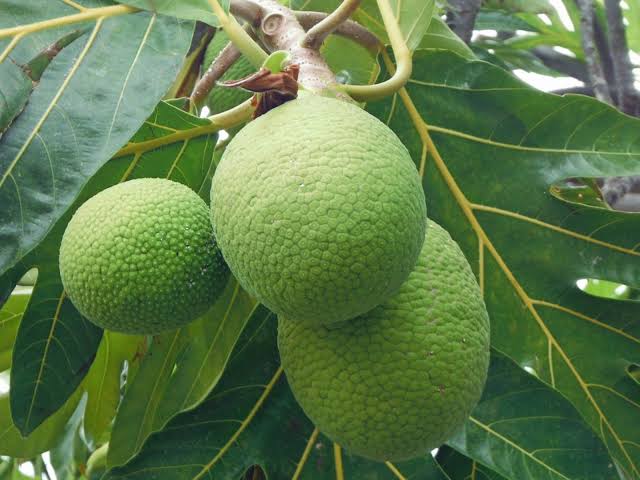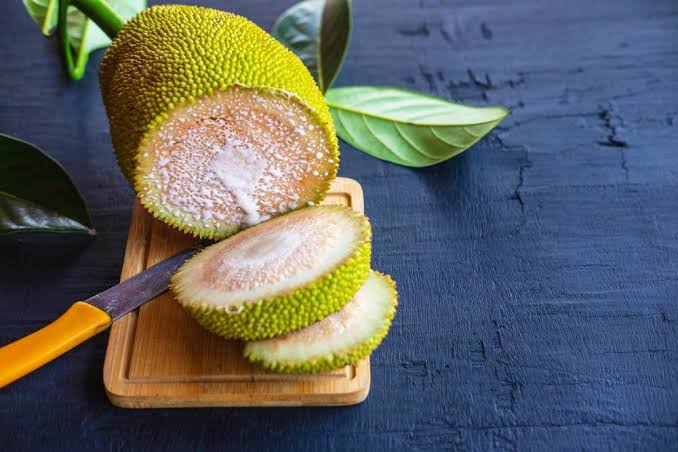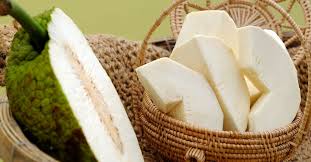Breadfruit scientifically known as Artocarpus altilis is a fascinating tropical fruit with a scientific name that may sound complex, but its story is anything but. This remarkable tree-borne delicacy has been a staple in many cultures for centuries, offering not only a rich source of sustenance but also a glimpse into the diverse world of edible plants.
Native to the Pacific Islands, breadfruit earned its name from its starchy, bread-like texture when cooked. The tree itself, with its broad leaves and robust stature, is an integral part of tropical landscapes. It belongs to the Moraceae family, a group that includes other well-known plants like figs and mulberries.
What makes breadfruit unique is its versatility in both culinary and agricultural aspects. The large, green, spiky-skinned fruits it bears are a nutritional powerhouse. Packed with carbohydrates, fiber, and essential vitamins, breadfruit serves as a reliable source of energy and nutrients for those who cultivate and consume it.
In addition to its nutritional value, breadfruit trees play a crucial role in sustainable agriculture. They are resilient and require minimal care, thriving in diverse climates. This adaptability makes them a valuable asset in combating food insecurity and promoting self-sufficiency in regions with challenging growing conditions.
The cultivation of breadfruit has also extended beyond its native habitats. Introduced to various tropical regions around the world, the tree has found a home in countries with suitable climates. This global spread has not only diversified the diets of local populations but has also contributed to the cultural exchange facilitated by the exchange of agricultural practices.
In many cultures, breadfruit is not just a source of sustenance; it holds cultural significance. From traditional ceremonies to everyday meals, this fruit has become intertwined with the fabric of societies that have embraced its cultivation. Its role in local cuisines ranges from savory dishes to delectable desserts, showcasing its adaptability in culinary creations.
Interestingly, the journey of breadfruit extends beyond its consumption. The latex extracted from the tree’s inner bark has been traditionally used for various purposes, including as a natural adhesive and waterproofing agent. This multifaceted utility underscores the resourcefulness of communities that have integrated breadfruit into their daily lives.
Its journey from the Pacific Islands to global adoption speaks volumes about its adaptability, nutritional richness, and cultural significance. Whether enjoyed on a plate or observed in the lush landscapes it inhabits, breadfruit remains a captivating and valuable component of our natural and cultural heritage.
Read Also: Sheep Production Guide
The History of Breadfruit

The history of breadfruit (Artocarpus altilis) weaves a rich tapestry, stretching back through the annals of time to the tropical landscapes of the Pacific Islands. First cultivated in these fertile regions, the breadfruit tree has played a pivotal role in the sustenance, culture, and exploration of various societies.
Indigenous to the South Pacific, particularly in areas like New Guinea and the islands of Micronesia and Polynesia, breadfruit became a dietary staple for many early Pacific Islanders. Its ability to thrive in tropical climates and produce an abundant yield made it a valuable resource for sustenance.
The significant maritime expansion and exploration of the Pacific Islanders, using outrigger canoes and advanced navigation techniques, contributed to the spread of breadfruit across the region. This deliberate dissemination of the plant showcased the close relationship between human societies and the cultivation of this versatile tree.
One of the most notable figures in the historical narrative of breadfruit is Captain James Cook, the famed British explorer. During his voyages in the late 18th century, Cook encountered breadfruit in the Pacific Islands and recognized its potential as a valuable food source for both sailors and the British Empire. In 1769, on his first voyage, Cook documented the use and cultivation of breadfruit in Tahiti.
Intrigued by its potential as a high-yield, starchy food source, Cook embarked on a second voyage in 1772, with the primary mission of transporting breadfruit plants to the Caribbean. The objective was to establish breadfruit as a staple food for enslaved populations, providing a cheap and sustainable source of nourishment.
In 1787, the HMS Bounty, commanded by Captain William Bligh, set sail on the infamous Breadfruit Expedition, commissioned by the British government. The ship carried breadfruit plants from Tahiti to the Caribbean. However, the mutiny led by Fletcher Christian disrupted the mission, and the Bounty returned to Tahiti. Despite this setback, subsequent voyages successfully transported breadfruit to the Caribbean, where it eventually became a valuable crop.
The history of breadfruit further unfolds as it spread beyond the Pacific and Caribbean, adapting to various climates and cultures. Its journey exemplifies the interconnectedness of human civilizations, agricultural practices, and the plant kingdom, shaping the global culinary and cultural landscape.
Today, breadfruit stands as a testament to the historical interplay between exploration, cultivation, and the human quest for sustenance. Its journey from the Pacific Islands to worldwide adoption serves as a reminder of the intricate relationships between plants and societies throughout history.
The Nutritional Values of Breadfruit

Breadfruit (Artocarpus altilis) boasts impressive nutritional values, making it a noteworthy addition to diverse diets. This tropical fruit, often likened to bread in texture, provides a range of essential nutrients that contribute to overall health and well-being.
1. Carbohydrates: Breadfruit is a rich source of carbohydrates, serving as an excellent energy provider. The carbohydrates in breadfruit mainly come in the form of complex carbohydrates, including dietary fiber, which supports digestive health and helps maintain steady blood sugar levels.
2. Dietary Fiber: High in dietary fiber, breadfruit aids in digestion and promotes a feeling of fullness. This fiber content is beneficial for maintaining a healthy digestive system and can contribute to weight management.
3. Vitamins: Breadfruit contains various vitamins, including vitamin C, which is essential for immune system support and skin health. Additionally, it provides B-vitamins, such as thiamine, riboflavin, and niacin, playing crucial roles in energy metabolism.
4. Minerals: The fruit is a good source of minerals like potassium, magnesium, and phosphorus. Potassium is essential for maintaining proper heart and muscle function, while magnesium contributes to bone health and muscle function.
5. Protein: While not as high in protein as some other plant-based sources, breadfruit does contain a moderate amount. Protein is crucial for the repair and maintenance of tissues in the body.
6. Phytochemicals: Breadfruit contains various phytochemicals, including antioxidants. These compounds help neutralize harmful free radicals in the body, potentially reducing the risk of chronic diseases.
7. Low in Fat: Breadfruit is relatively low in fat, making it a suitable choice for those seeking a low-fat diet. The absence of saturated fats contributes to its heart-healthy profile.
8. Gluten-Free: Breadfruit is naturally gluten-free, making it a suitable option for individuals with gluten sensitivities or celiac disease.
Incorporating breadfruit into a balanced diet can provide a nutrient-dense and sustainable source of essential elements. Its nutritional composition makes it a valuable addition to both traditional and modern culinary practices, contributing not only to health but also to the culinary diversity of regions where it is cultivated.
Read Also: Fattening of Sheep and Goats Guide
The Health Benefits of Breadfruit

Breadfruit (Artocarpus altilis) offers a range of health benefits, making it more than just a tasty tropical fruit. From supporting digestive health to contributing to overall well-being, the nutritional properties of breadfruit have positive implications for various aspects of human health.
1. Digestive Health: Rich in dietary fiber, breadfruit promotes healthy digestion by aiding in regular bowel movements and preventing constipation. The fiber content also helps maintain a feeling of fullness, which can be beneficial for those looking to manage their weight.
2. Energy Boost: The high carbohydrate content in breadfruit provides a quick and sustained energy boost, making it an excellent choice for individuals with active lifestyles or those in need of a natural energy source.
3. Heart Health: Breadfruit’s potassium content supports heart health by helping regulate blood pressure. Potassium acts as a vasodilator, promoting the relaxation of blood vessels and reducing the strain on the cardiovascular system.
4. Immune System Support: The presence of vitamin C in breadfruit contributes to a healthy immune system. Vitamin C is an antioxidant that helps protect the body against infections and supports the proper functioning of the immune system.
5. Bone Health: Breadfruit contains essential minerals like calcium and magnesium, contributing to bone health. These minerals play a crucial role in maintaining strong and healthy bones.
6. Skin Health: The combination of vitamins and antioxidants in breadfruit can contribute to skin health. Vitamin C, in particular, is essential for collagen synthesis, promoting skin elasticity and resilience.
7. Anti-Inflammatory Properties: Some compounds in breadfruit exhibit anti-inflammatory properties, which may help reduce inflammation in the body. Chronic inflammation is associated with various health conditions, so incorporating anti-inflammatory foods like breadfruit can be beneficial.
8. Weight Management: The fiber content in breadfruit promotes a feeling of fullness, potentially reducing overall calorie intake. Including fiber-rich foods in a balanced diet can be helpful for those aiming to manage or lose weight.
9. Blood Sugar Regulation: The complex carbohydrates and fiber in breadfruit contribute to stable blood sugar levels. This makes it a suitable choice for individuals with diabetes or those looking to maintain steady energy throughout the day.
10. Gluten-Free Option: Breadfruit is naturally gluten-free, providing a safe and nutritious option for individuals with gluten sensitivities or celiac disease.
Incorporating breadfruit into a well-balanced diet can contribute to overall health and nutrition. While enjoying its delicious taste and versatility in the kitchen, individuals can also reap the numerous health benefits that this tropical fruit has to offer.
How to Grow Breadfruit (Growing Guide)
Growing breadfruit (Artocarpus altilis) can be a rewarding experience, especially in tropical or subtropical regions. Here’s a simple guide to help you cultivate this versatile and resilient tree:
1. Climate: Breadfruit thrives in tropical and subtropical climates with warm temperatures. It prefers temperatures between 60°F (15°C) and 100°F (38°C). Frost can be detrimental, so it’s crucial to plant in areas where freezing temperatures are not common.
2. Soil: Choose well-draining, fertile soil for planting. Breadfruit trees tolerate a range of soil types, including sandy or loamy soils. Ensure the soil pH is slightly acidic to neutral (6.0-7.5).
3. Propagation: Breadfruit can be propagated through seeds or cuttings. Seeds should be planted in well-prepared soil, while cuttings should be taken from mature, healthy trees and planted in a rooting medium until they develop roots.
4. Planting:
Select a Location: Choose a sunny spot with plenty of sunlight for optimal growth.
Dig a Hole: Dig a hole twice the size of the root ball or seedling container.
Planting Depth: Plant the breadfruit seedling or cutting at the same depth it was in the container or, for seeds, about 2 inches (5 cm) deep.
Spacing: If planting multiple trees, space them at least 15-20 feet (4.5-6 meters) apart to allow for proper growth.
5. Watering: Breadfruit trees require regular watering, especially during dry periods. Provide consistent moisture, but avoid waterlogged conditions. A well-established tree can tolerate short periods of drought.
6. Fertilization: Apply a balanced fertilizer, rich in nitrogen, phosphorus, and potassium, during the growing season. Young trees may benefit from a more nitrogen-rich fertilizer to encourage vegetative growth.
7. Pruning: Prune the tree to shape it and remove dead or crowded branches. This helps promote airflow and sunlight penetration, reducing the risk of diseases.
8. Mulching: Apply a layer of organic mulch around the base of the tree to retain moisture, suppress weeds, and provide nutrients as it decomposes.
9. Pests and Diseases: Monitor for pests such as aphids, scale insects, and caterpillars. Regularly inspect the tree for signs of diseases, and promptly address any issues to prevent spreading.
10. Harvesting: Breadfruit trees typically start bearing fruit within 2-3 years. Harvest fruits when they are mature but still firm. Ripe breadfruit has a sweet aroma and yields slightly to pressure.
Read Also: Cod Liver Oil Capsules: All You Need to Know About
